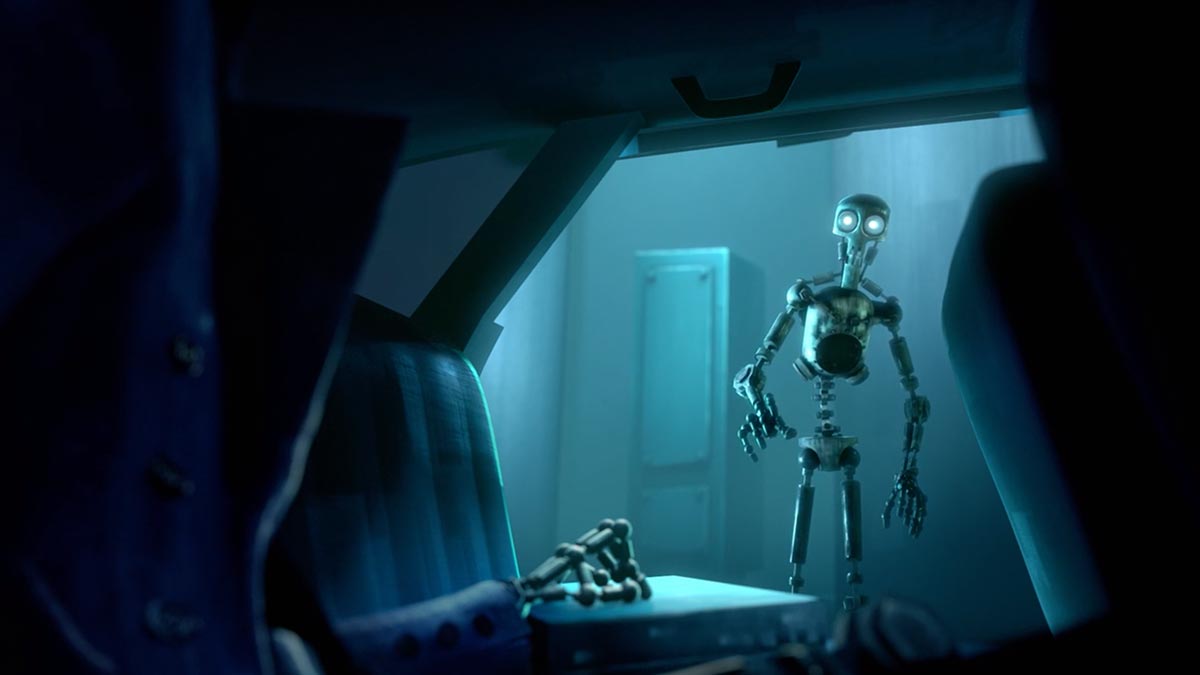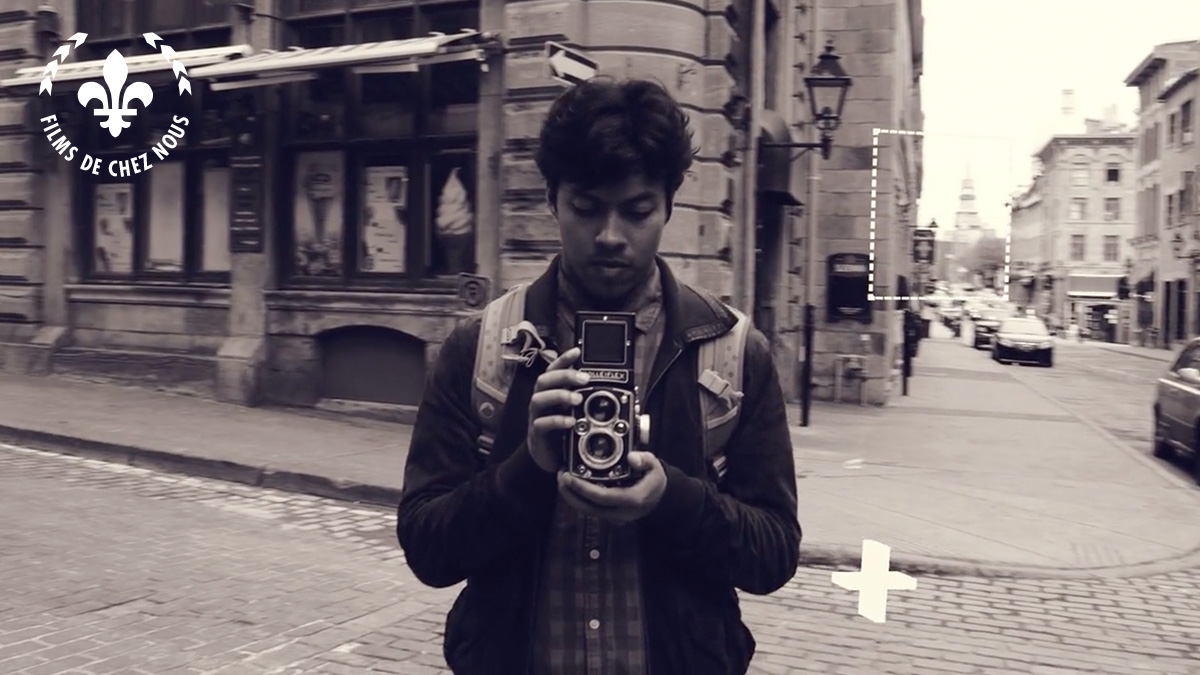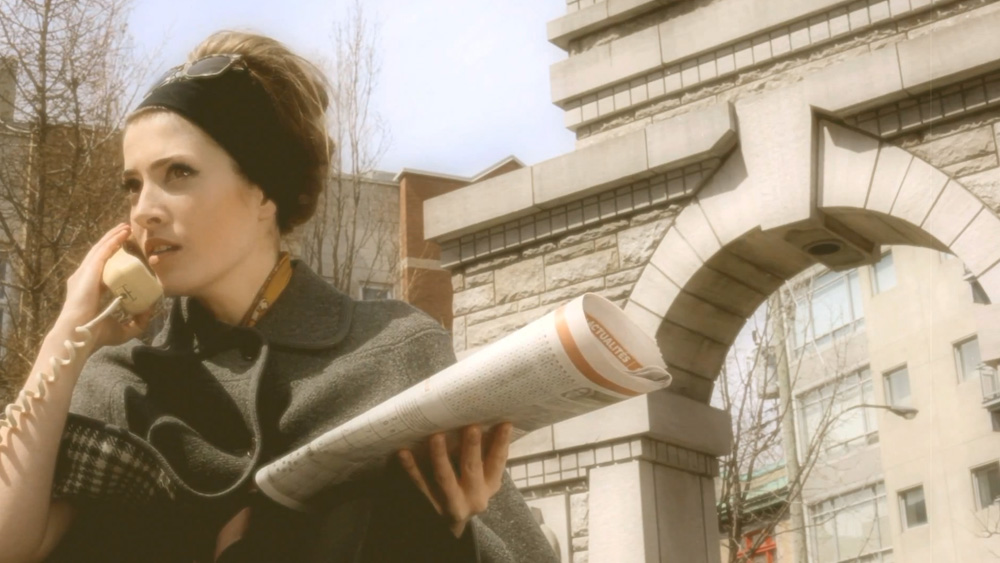When everything goes wrong, missing a train can lead to powerful stories.
“Connection” is a mesmerizing film from Loïc Phil that delves into the profound intensity of a chance encounter between two young individuals facing challenging moments in their lives. Set against the backdrop of a single night infused with serendipity, the film beautifully captures the essence of their newfound connection. The enigmatic ending adds to the allure, leaving us yearning for more while acknowledging that the power of this encounter will undoubtedly shape their lives forever.
What makes “Connection” truly remarkable is its ability to evoke a sense of authenticity and spontaneity, achieved despite the constraints of shooting on 16mm film. The filmmakers skillfully crafted a series of seemingly impromptu moments, seamlessly blending them together to create a captivating narrative. “Connection” leaves an indelible impact on its viewers, exploring the depths of love and the transformative power of chance encounters. Though the conclusion remains tantalizingly unknown, the film’s intensity and abundance of emotions will linger long after the credits roll. We had the opportunity to ask Loïc a few questions about the film:
Can you tell us about the inspiration behind the concept of “Connection” and how it evolved during the filmmaking process?
The initial idea behind Connection was to make a film that would capture the energy of a love encounter. I wanted to show how this type of encounter causes a confusion between the real events and the fantasies of those who live it. This is an idea that I tried to keep throughout the creation of the film: to make the viewer get caught up in an emotional effervescence made of surprise, hope, sweetness, and desire, so that at the end we don’t know what is real and what is fantasized. The only certainty is that all of these emotions did exist.
What were some of the challenges you faced in capturing the essence of the characters’ love encounter within the constraints of time and resources?
The shooting of the film was based on two strong constraints. The first one was that in order to capture the abundant aspect I was looking for, we needed to shoot in a lot of places in a very short time. The second, and probably the strongest, was that we decided to shoot the film in 16mm film and that our stock of reels was very limited. So we had to shoot a lot of shots, in a lot of places, while being as precise as possible not to waste the reel. Every hesitation could be costly, as it could make us miss the sunset, or worse: lead us to run out of reel. There is nothing more frightening than the idea of not being able to shoot anymore despite being on set. It was very stressful and very exciting at the same time.
The film leaves the ending open-ended, with the audience uncertain about the young man’s decision. What was the significance of this narrative choice, and what emotions or themes were you aiming to evoke?
I really wanted this suspended ending. The whole film is about the sequence of events that lead the young man to make a life choice: to take a train back to his complicated existence, or to stay with a girl he hardly knows. By not showing what his final decision is, I want to emphasize that the most important thing is not really what happens next, but all the energy that was released by this encounter. I think that many people have been in similar situations, moments in life where by chance a fork in the road appears. It is a privileged moment where everything seems possible: to change one’s life, to make a new start, to leave everything behind, etc. What I want to say through this suspended ending is that the essential beauty of these moments does not lie in the decision we make, but in the fact that we have been able to project ourselves with great sincerity into something else. Even if the young man has gone to catch his train, his life will never be the same again, because for a moment he has contemplated in a very powerful way something other than his present life.
How did you work with the actors to portray the rapid shift from 0% to 100% commitment in such a short time frame? What techniques or discussions did you employ to help them convey the intensity of the moment?
If we had shot digitally, I would have shot long sequences from which I would have extracted a lot of small moments in the edit. But we were shooting on film and our reel time was very limited. So we had to be as concise and direct as possible. Everything had to be written in advance with precision. The rhythm of the film being very fast, the actors had time slots of a few seconds to convey an emotion, and make us understand the state of development of their relationship. This had to be done through glances, little mimics, symbolic gestures, etc. Before the shooting, we organized rehearsals whose objective was to synthesize entire sequences in a few key gestures. A kind of editing before the shooting. It was very interesting to do. Once they arrived on set, the actors had to be able to remember these gestures instantly. For example, we worked a lot on the breathing for the scene in the train station and the love scenes. It allowed the actors to be in the intensity of the scene even before the camera was rolling. This breathing work helped a lot. I am very happy with the work of the actors Paul Balent and Betty Cafora who were perfect.
Can you discuss the role of camera movements in conveying a sense of urgency and energy within the film? How did you plan and execute these movements to enhance the storytelling?
While the actors had to show us the evolution of their feelings, it was important that the camera movements match this intensity. I wanted to create a real flow between the characters and the camera so that both would express the frenzy of this encounter. We worked together with DOP Thierry Le Mer to adjust our camera to the different moments of the story and “dance” with the characters and their feelings.
The film aims to capture a series of spontaneous moments. Can you share any specific examples or instances where unexpected elements or “happy mistakes” contributed to the overall authenticity and impact of the film?
The whole methodology of the shooting was to avoid looking for happy mistakes in order not to waste reel. The essential was therefore written beforehand to make it look like each shot was a stolen moment. It was a very interesting effort of synthesis to do in preparation. But on set, there was almost no room for improvisation.
What do you hope viewers will take away from “Connection,” particularly in terms of the transformative power of a chance encounter and the impact it can have on one’s life?
First of all, I hope that the film will resonate with the audience’s experience and that they will be able to project themselves into moments of their own lives. My idea is to say that the energy that unfolds during these moments should be considered with great kindness, because it is rare. The “visions” that seize us tell us a lot about ourselves, our desires, our fears, our perception of the world. We must look at them with care because it is in these unforeseen moments that the field of possibilities seems to extend to infinity. What we see through the doors that open is precious, and will change us in one way or another.
How did the choice to shoot on 16mm film enhance the visual aesthetic and overall experience of the film for both the filmmakers and the audience?
I wanted to shoot in 16mm because it was a real directorial challenge. It’s a totally different way of thinking about a film. I’ve always given a lot of importance to editing. It’s very practical, but it gave me the bad habit of shooting a lot of footage and then making directing decisions in post production. Choosing to shoot on film meant that I had to make these choices before the shoot. It forced me to come back to the essence of the director’s job, which is to project myself. It was all the more difficult because Connection is, in my opinion, the very example of a film that it would be relevant to shoot in digital, by filming a lot of material, a bit like a documentary. I had to rethink the whole process of creating the film, and sort of edit it in my head before shooting it. In the end, almost all the shots that were written are present in the final cut. It was really nice to see everything come together in the right order. In short, it was very exciting to do.
The other reason for 16mm is obviously aesthetic. I’ve always really liked the grain and the way the highlights look on film. When I was younger, Aronofsky’s films made a big impression on me from a visual point of view. 16mm is also the film of the documentary. I have always found these images very vibrant, very real, very brutal too. My thoughts go to Chris Marker’s films like Sans Soleil (1983) or Grin Without a Cat (1977) where the skin of the image gives it an additional meaning. I also have powerful memories of images of the Afghan war shot by the Soviets in the 1980s, or even the documentary on Woodstock by Michael Wadleigh (1970).
I thought that this type of moving image lent itself very well to the intensity of Connection’s story. To give it a carnal and real feel. It worked all the more in the setting we had: old-fashioned rural France. Just like in Pietro Marcello’s film Martin Eden (2019), I like the idea that we don’t know in which era the action takes place.
Finally, what are your favorite short films? And which shorts can you say directly inspired or motivated this film?
I really like short films with strong emotional engagement. As such, I really enjoyed Anderson Wright’s work on Every Nite is Emo Nite (2017). In just a few minutes, the director immerses us in a world that is completely foreign to us, with touching characters. We live a tiny piece of life with them, move in their company, and it expands our experience of reality. When I was younger, I also watched a lot of travel films. Thanks to the editing, from the multiplicity of places and faces, something deep and universal emerges. At the time, Vincent Urban’s In South America (2012) was a real slap in the face.
Among the films that inspired Connection, there are surprisingly many commercials, as it is a format that lends itself very well to elliptical narration. First of all, there is the incredible Wrangler – Long Lives Cowboys by Ed McMulloch whose photography, sound design and editing are of a rare beauty. I also really liked Lonesome Traveler by Mohamed El Zayat, which follows an Egyptian family on a long journey to a hospital. The film is a series of small, touching scenes edited in an elliptical and elegant fashion. I really like the sense of temporal thickness that emerges in less than 2 minutes. It feels like you’ve traveled several weeks with the characters. I really wonder how much every scene was written in advance, or how much of it was shot on the spot. But the result is very . accurate. Finally, I really liked the simplicity of Marcus Ibanez’ Sex for Every Body. He manages very well to capture small gestures that make the meeting between two strangers very touching. There is also an interesting proposal in this film to have two time frames that overlap within a very short film. It was a real inspiration.
The whole methodology of the shooting was to avoid looking for happy mistakes in order not to waste reel. The essential was therefore written beforehand to make it look like each shot was a stolen moment. It was a very interesting effort of synthesis to do in preparation. But on set, there was almost no room for improvisation.
First of all, I hope that the film will resonate with the audience’s experience and that they will be able to project themselves into moments of their own lives. My idea is to say that the energy that unfolds during these moments should be considered with great kindness, because it is rare. The “visions” that seize us tell us a lot about ourselves, our desires, our fears, our perception of the world. We must look at them with care because it is in these unforeseen moments that the field of possibilities seems to extend to infinity. What we see through the doors that open is precious, and will change us in one way or another.
I wanted to shoot in 16mm because it was a real directorial challenge. It’s a totally different way of thinking about a film. I’ve always given a lot of importance to editing. It’s very practical, but it gave me the bad habit of shooting a lot of footage and then making directing decisions in post production. Choosing to shoot on film meant that I had to make these choices before the shoot. It forced me to come back to the essence of the director’s job, which is to project myself. It was all the more difficult because Connection is, in my opinion, the very example of a film that it would be relevant to shoot in digital, by filming a lot of material, a bit like a documentary. I had to rethink the whole process of creating the film, and sort of edit it in my head before shooting it. In the end, almost all the shots that were written are present in the final cut. It was really nice to see everything come together in the right order. In short, it was very exciting to do.
The other reason for 16mm is obviously aesthetic. I’ve always really liked the grain and the way the highlights look on film. When I was younger, Aronofsky’s films made a big impression on me from a visual point of view. 16mm is also the film of the documentary. I have always found these images very vibrant, very real, very brutal too. My thoughts go to Chris Marker’s films like Sans Soleil (1983) or Grin Without a Cat (1977) where the skin of the image gives it an additional meaning. I also have powerful memories of images of the Afghan war shot by the Soviets in the 1980s, or even the documentary on Woodstock by Michael Wadleigh (1970).
I thought that this type of moving image lent itself very well to the intensity of Connection’s story. To give it a carnal and real feel. It worked all the more in the setting we had: old-fashioned rural France. Just like in Pietro Marcello’s film Martin Eden (2019), I like the idea that we don’t know in which era the action takes place.
I really like short films with strong emotional engagement. As such, I really enjoyed Anderson Wright’s work on Every Nite is Emo Nite (2017). In just a few minutes, the director immerses us in a world that is completely foreign to us, with touching characters. We live a tiny piece of life with them, move in their company, and it expands our experience of reality. When I was younger, I also watched a lot of travel films. Thanks to the editing, from the multiplicity of places and faces, something deep and universal emerges. At the time, Vincent Urban’s In South America (2012) was a real slap in the face.
Among the films that inspired Connection, there are surprisingly many commercials, as it is a format that lends itself very well to elliptical narration. First of all, there is the incredible Wrangler – Long Lives Cowboys by Ed McMulloch whose photography, sound design and editing are of a rare beauty. I also really liked Lonesome Traveler by Mohamed El Zayat, which follows an Egyptian family on a long journey to a hospital. The film is a series of small, touching scenes edited in an elliptical and elegant fashion. I really like the sense of temporal thickness that emerges in less than 2 minutes. It feels like you’ve traveled several weeks with the characters. I really wonder how much every scene was written in advance, or how much of it was shot on the spot. But the result is very . accurate. Finally, I really liked the simplicity of Marcus Ibanez’ Sex for Every Body. He manages very well to capture small gestures that make the meeting between two strangers very touching. There is also an interesting proposal in this film to have two time frames that overlap within a very short film. It was a real inspiration.




